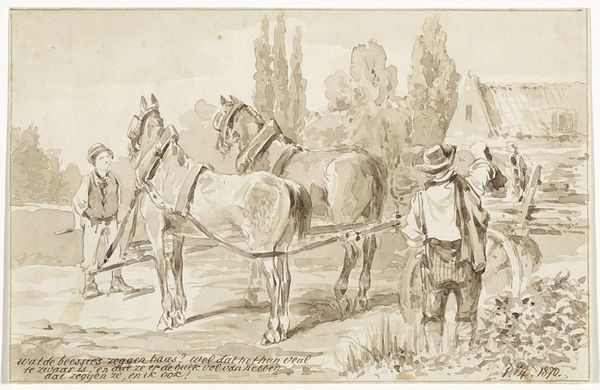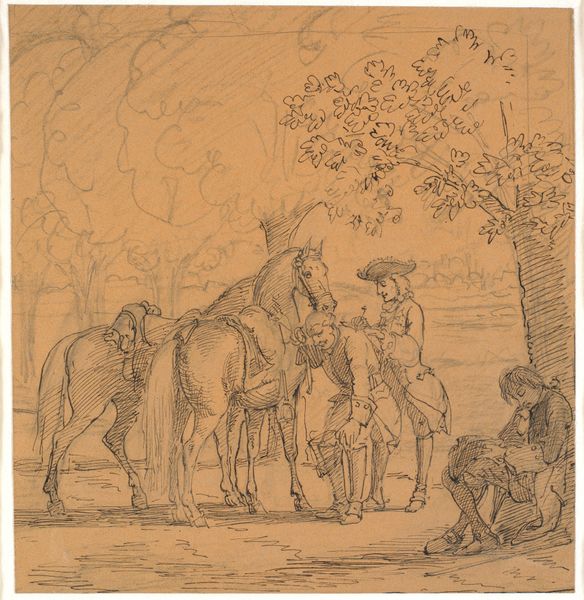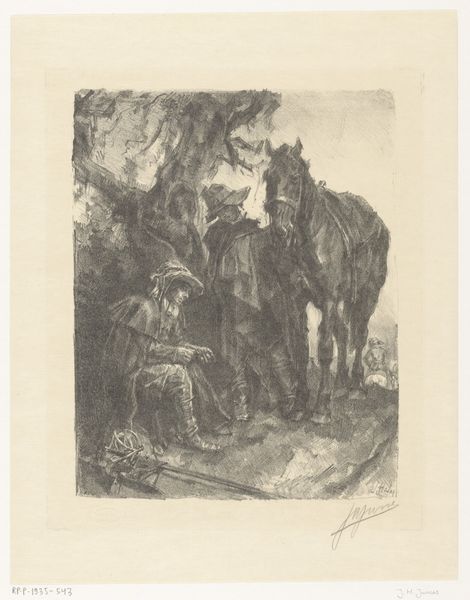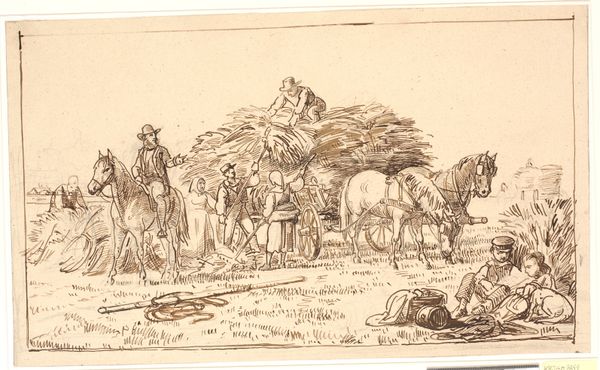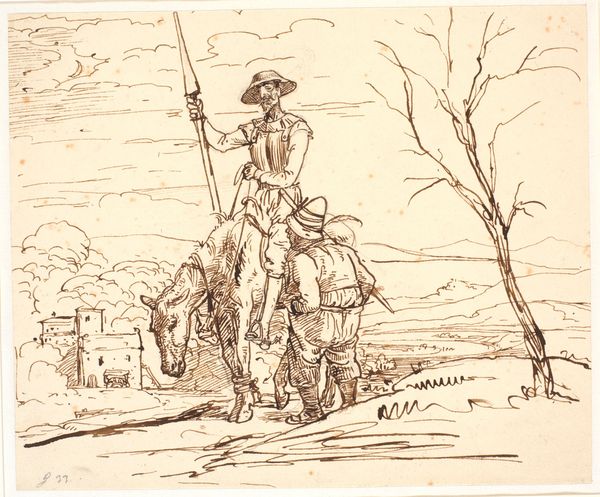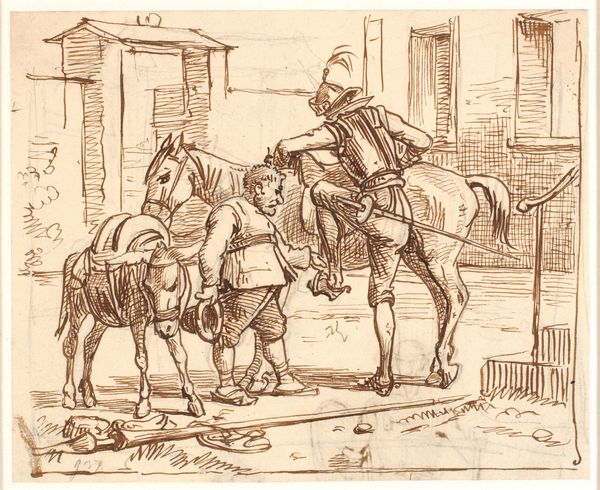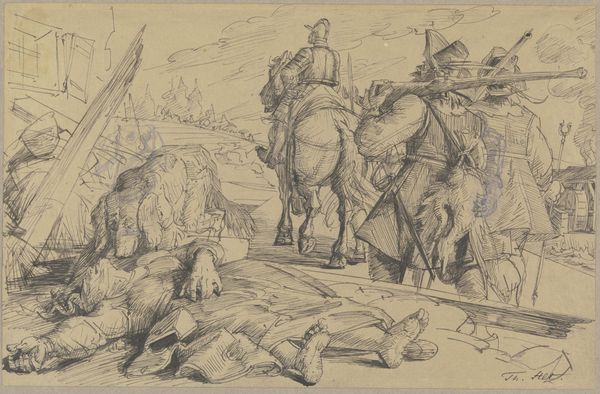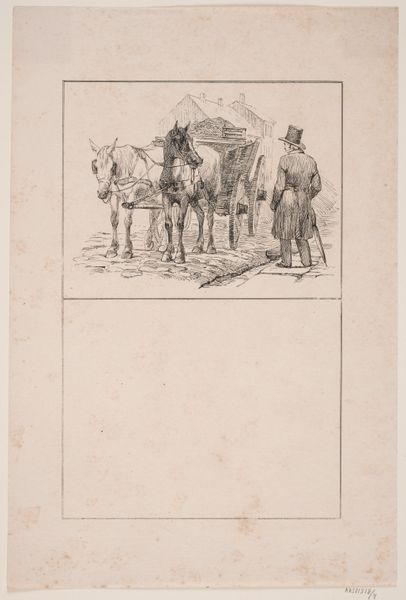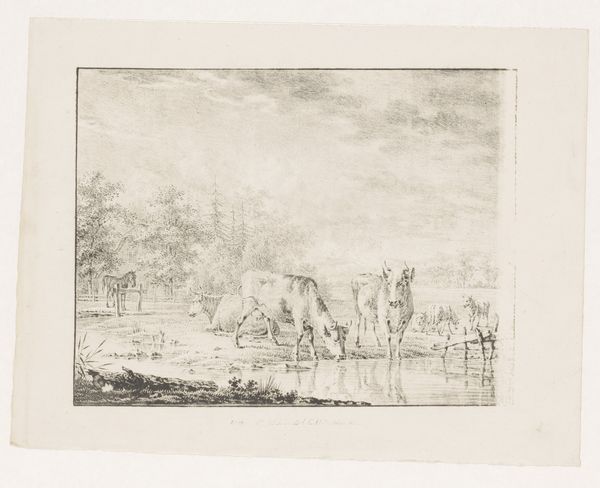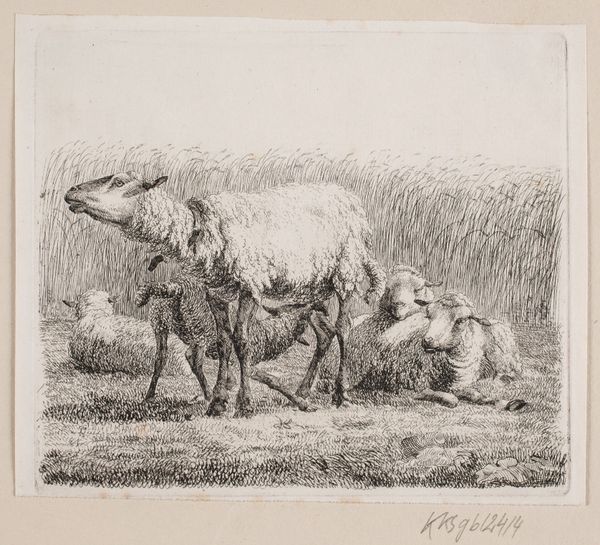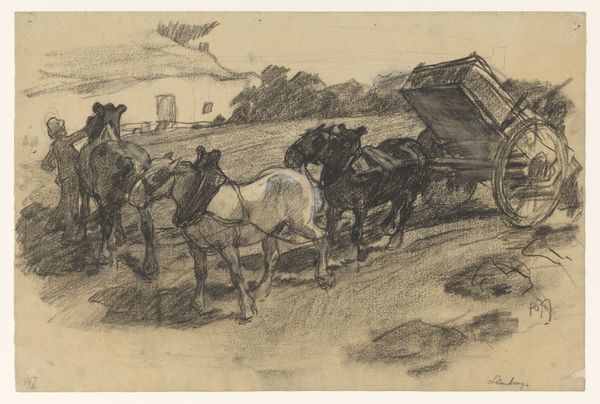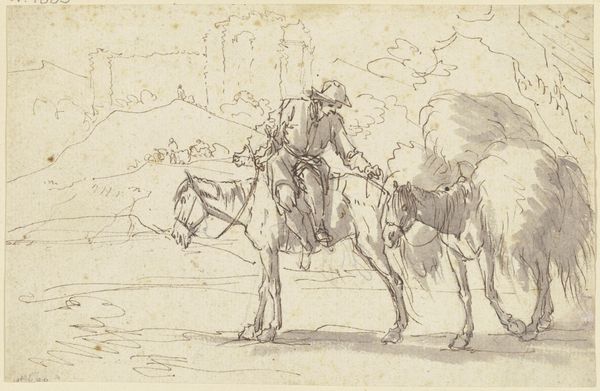
drawing, ink
#
drawing
#
ink drawing
#
landscape
#
figuration
#
ink
#
romanticism
#
horse
#
genre-painting
#
history-painting
Dimensions: height 333 mm, width 201 mm
Copyright: Rijks Museum: Open Domain
Curator: It feels so still. All the motion held just for a moment. It’s an ink drawing of light dragoons, soldiers on horseback, pausing to let their mounts drink. Editor: This piece by Willem Constantijn Staring, entitled "Lichte Dragonders die paarden laten drinken op de rust," translates to 'Light Dragoons Letting Horses Drink at Rest.' Created around 1830, it captures a moment during a time of considerable social and political upheaval in Europe. Curator: It's funny how that translates, it seems to lose some of the beauty and feeling, some of the restfulness I felt. Do you think the dragoons felt it too? Editor: Absolutely. Rest was crucial for maintaining morale and operational effectiveness. Think about the power dynamics inherent in this tableau – the dragoons, instruments of power, temporarily dependent on nature's provision for their horses. It hints at the ecological costs of militarization and territorial control. Curator: Ecological costs is not something I’d considered with an 1830 ink drawing! I was simply reflecting on how deftly Staring uses line weight. The trees dissolve in the background, whereas the horse in the front and center almost walks right out of the image toward us. Editor: Exactly! The precision in rendering the horses—these animals weren't merely modes of transport; they were partners. Their care reflected on the soldiers' values. Beyond the tactical details, there's this suggestion of comradeship and shared vulnerability within a potentially brutal military system. The landscape becomes a liminal space where tensions simmer, and nature itself is implicated. Curator: Comradeship and vulnerability captured in a series of skillfully rendered lines. You know, thinking about all this has given me a different lens to consider my daily pauses with my pup at the park. Editor: It goes to show, doesn’t it? These artworks, ostensibly historical or pastoral, become sites of powerful reflections on enduring struggles—access to resources, societal inequalities, and the environment that sustains us all. Curator: Exactly! Thanks for sharing your view of this drawing and the period that produced it. I am heading out to feed my cats, thinking of those horses… Editor: Thank you; I will reflect on the implications of every future stroll I take near the canal!
Comments
No comments
Be the first to comment and join the conversation on the ultimate creative platform.
